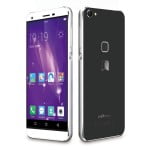
Mid-range smartphones have had something of a reinvention in the last couple of months. Instead of overpriced plastic slabs, we’ve seen metal beauties such as Samsung’s Galaxy A3 and Galaxy A5, and theEE Harrier showed you don’t have to pay over the odds to get a fast, snappy chipset. This all gives the Xperia M4 Aqua, some pretty big shoes to fill, but luckily Sony’s latest is more than up to the challenge.
Like the Xperia M2 before it, the Xperia M4 Aqua takes several design cues from its Xperia Z cousins, which in this case are the Xperia Z3 and Xperia Z3 Compact. In fact, it riffs off both smartphones almost note for note, as it’s rated IP67/68 water and dust-resistant and uses a near identical unibody metal frame and glossy glass rear.
DESIGN
The end result is a seriously stylish-looking handset, and the red coral variation is particularly gorgeous. Measuring just 7.3mm thick and weighing 136g, the Xperia M4 Aqua is just as thin as the Xperia Z3 but almost 20g lighter, making it that bit more comfortable to hold. We were big fans of the Xperia Z3’s design when it launched at the end of last year, so we’re pleased to see its curved metal frame and nylon-protected corners making a comeback here. It gives the phone fantastic build quality, and we much prefer it to the flat, angular lines of Samsung’s Galaxy A3 and Galaxy A5.

Since it’s waterproof, you’ll be able to immerse the phone in up to a metre of water for 30 minutes without damaging the phone’s internals. This has long been a staple of Sony’s flagship devices, so it’s great to see this feature being introduced further down the line. However, unlike the Z3 and Z3 Compact, you won’t have to worry about making sure the USB port is sealed off each time you want to check Twitter in the bath, as the Xperia M4 Aqua has the same capless USB port as the Xperia Z3+. Just make sure you dry the touchscreen, as it’s difficult to use accurately when wet.
DISPLAY
With a 5in 1,280×720 screen, the M4 Aqua has a much bigger screen than the similarly-priced Galaxy A3, but its colour accuracy was disappointingly low. According to our colour calibrator, the M4 Aqua’s IPS display was showing just 86.2% of the sRGB colour gamut, which is roughly the same as the £140 Xperia M2. The screen’s red coverage was by far its weakest point, and it showed in our test images, as colours looked noticeably cool compared to M2.

However, while colours don’t necessarily have a lot of punch, whites are much cleaner and its high peak brightness of 534.28cd/m2 makes it very versatile regardless of whether you’re indoors or out in the sunshine. The downside is that blacks aren’t particularly deep, as we measured a black level of 0.72cd/m2, which is the highest score we’ve ever recorded. Even the Xperia Z3, which had a higher max brightness of 592.19cd/m2, managed to keep blacks down to 0.52cd/m2, so to see the M4 go even higher is disappointing. This means that text may have a tendency to look quite grey when set to its highest brightness settings on the M4 Aqua, but at least the screen’s contrast ratio of 735:1 means you’ll still find plenty of detail present.
PERFORMANCE
Swiping through Android 5.0.2’s home screens we were impressed by the M4’s sheer speed. Its octa-core Qualcomm Snapdragon 615 processor and 2GB of RAM felt like a breath of fresh air compared to the slower quad-core Snapdragon 410 processors found in the Samsung Galaxy A3 and Galaxy A5. This chipset is much more befitting for a £225 handset, and the difference was plain to see in both our benchmark scores and day-to-day use.
For instance, the M4 Aqua’s Geekbench 3 scores of 638 in the single core test and 2,427 in the multicore test weren’t that far off the LG G4, which scored 692 and 2,547 respectively. Admittedly, the G4’s Snapdragon 808 is noticeably slower than the Snapdragon 810 inside the HTC One M9 and Samsung’s Exynos chip in the Galaxy S6, but the fact the M4 Aqua is even in the same ball park is pretty impressive for a £225 smartphone.

Equally outstanding was its Peacekeeper browsing test score of 839, which actually beats the LG G4 and comes in just behind the Huawei P8, which scored 849. It’s also faster than other phones we’ve seen with the Snapdragon 615 chipset, as the EE Harrier scored just 737 while the HTC Desire 820 scored 799. In practice, web pages loaded quickly and scrolling down image-heavy web pages felt extremely fast and smooth.
Graphics performance was good, too, as it produced 752 frames in the demanding onscreen Manhattan test in GFX Bench GL 3.0 (which equates to roughly 12fps) and 362 frames (or 5.8fps) in the offscreen test. While this might not sound very impressive on paper, it’s much better than the measly 395 and 111 frames produced by the Galaxy A3. Likewise, we had no trouble at all running games like Blizzard’s Hearthstone, as battle animations were smooth and we were able to move our cards round the screen without any signs of stutter or jerky movements.
[Source:- Expertreviews]










